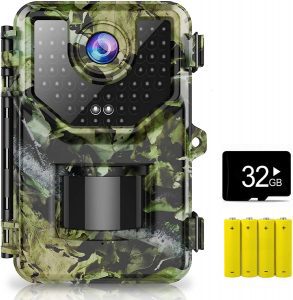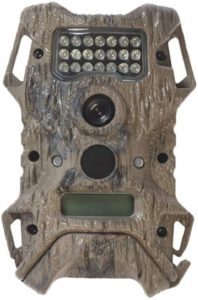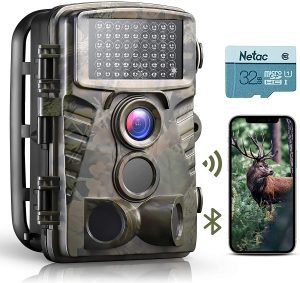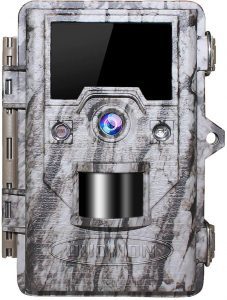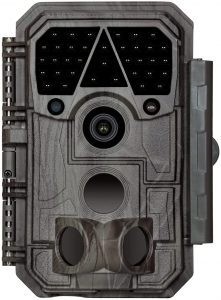The Best Deer Cameras
We looked at the top 5 Deer Cameras and dug through the reviews from 15 of the most popular review sites including and more. The result is a ranking of the best Deer Cameras.
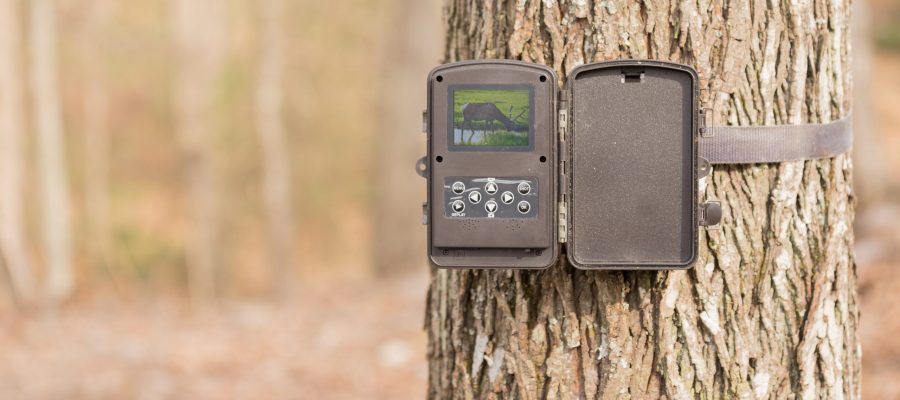
Our Review Process
Don't Waste Your Money is focused on helping you make the best purchasing decision. Our team of experts spends hundreds of hours analyzing, testing, and researching products so you don't have to. Learn more.
Our Picks For The Top Deer Cameras
You won't miss a thing with this deer camera, as it comes with a super fast trigger time of 0.2 seconds. The camera itself is rain-proof, drop-proof and dust-proof, which means you'll be able to use it in just about any environment. Additional features include a 120-degree wide-angle lens, a 2.5-inch LCD display and night vision of up to 65 feet.
Memory Card IncludedYou won't have any trouble sticking to a budget when you opt for this high-quality deer camera.
This deer camera is perfect for scoping out the best hunting spots. It's camouflage design keeps it hidden, as it resembles the tree bark where you place it. The camera itself is energy efficient and features a detection range of up to 65 feet and 21 infrared LED lights that will capture clear images and videos of a herd without the wildlife ever b...
Most EconomicalWhen sticking to a budget, this affordable deer camera is the way to go.
Thanks to the company's app and the built-in Wi-Fi, you'll be able to view images and videos from this deer camera on your phone. With a trigger speed of just .2 seconds, you'll capture even the quickest moving wildlife. Since the camera is weatherproof and has a battery life of up to 1 year, you can set it up and leave it for the entire hunting se...
High-Tech OptionIn addition to high-quality pictures, this deer camera also produces stunning audio.
If you're looking to capture stunning videos at night, as well as during the day, then this deer camera is an excellent investment. It features 1080P images, sound recording capabilities and infrared lights that don't glow (so there's no risk of scaring wildlife away). A mounting strap and USB cable are included with this model.
Quick Trigger SpeedHunters are sure to love the time-lapse feature on this functional deer camera.
Designed with three motion sensors, this deer camera is able to capture images and videos from nearby wildlife in just .1 seconds. The camera impresses with 32MP high-definition resolution images and 1296P video. Captured images and videos are also a cinch to download to any computer or smartphone, making this camera a great choice for beginners.
Long Distance MonitoringAmazingly, this deer camera has night vision capabilities of up to 100 feet.
Buying Guide
Hunters can spend hours sitting in the woods, waiting for game to pass by. In some cases, they may not even know the best hunting ground, especially if they’re newer to the sport. One way to avoid spending hours in wait is to use a trail or deer camera to monitor the habits of your prey so that you can then prepare to show up when you’re most likely to get results. Deer cameras can also be a great addition to your backyard, especially if you live in an area with lots of wildlife.
As deer cameras have become more accessible to the average person, they’ve grown to be a very popular tool. In fact, you’ll rarely meet an avid hunter who doesn’t own at least one. You may even find that you’re more excited about the pictures you’re capturing on a daily basis than the activity of hunting itself. By the time you get around to your next hunt, you’ll already be all too familiar with the spot you’ve chosen.
In addition to their value in stalking prey, though, deer cameras have become an affordable type of security camera. They’re designed to be easily mounted while also remaining fairly inconspicuous in colors like black, gray and camouflage. If you plan to use your camera this way, look for a deer camera that specializes in capturing video in night mode and, if you want it, you’ll need to make sure it records audio.
Whether you’re waiting to capture intruders on your property or you’re using a deer cam for its original purpose, that invisibility is important. Some cameras use infrared lights or flashes to capture images at night, which could be an issue if you’re trying to keep it quiet that a camera is there. This is especially concerning if you’ve left it in the woods year-round since someone could come along and steal it.
For extra security, though, you can buy a locking cable that will hold your camera in place. Although this won’t guarantee it can’t be stolen, it will act as a theft deterrent. There’s also the fact that your camera will capture photo and/or video of anyone who tries to steal it. That may also keep a thief away out of fear that the images might be streaming to an external source.
You should also consider battery life while you’re shopping for a trail or deer camera. Even if it’s only occasionally capturing images, you’ll be surprised how quickly your camera’s batteries need to be replaced. Some promise longer battery life than others, so look for this if it’s an important feature.
How the images are captured is important as well. Many trail cameras operate in motion-sensor mode, only activating when something or someone comes into focus. With trail cameras, you’ll also have the option of time-lapse mode to gather images over a period even when no activity is present. Some cameras can even capture motion-detected shots while the time-lapse mode is in place.
Lastly, there’s the issue of video. Some cameras shoot higher-quality video than others, even offering 1080P HD resolution. However, you may not find that this level of quality is essential. One feature that might be worth considering, though, is whether your camera captures audio along with the video it gathers. You’ll also be limited in the amount of video footage you can shoot, giving you only seconds before it cuts off.
Why we recommend these deer cameras?
Products Considered
Products Analyzed
Expert Reviews Included
User Opinions Analyzed
The Best Bang For Your Buck
Wildgame Innovations Terra Extreme Infrared LEDs Deer Camera
Key Takeawy
This deer camera is perfect for scoping out the best hunting spots. It's camouflage design keeps it hidden, as it resembles the tree bark where you place it. The camera itself is energy efficient and features a detection range of up to 65 feet and 21 infrared LED lights that will capture clear images and videos of a herd without the wildlife ever being alerted.
What to Look For
- One differentiating factor when you’re considering deer cameras is motion-sensor capability. Some cameras will capture movement as far as 80 feet away, ensuring you never miss anything.
- Some cameras also have a time-lapse mode, which captures images over a predetermined period of time even if there’s no activity. Look for a model that lets you choose from intervals between one minute to an hour during a timeframe you choose. You could also go with a camera that continues to capture motion-detected shots even while in time-lapse mode.
- It would be nice if you could set up your deer camera at the start of hunting season and leave it there throughout. Unfortunately, trail cameras can burn through batteries at a surprising rate. Some promise true one-year battery life, while others use six AA batteries, which means you’ll probably find you’re changing them more often than you’d prefer. You can save on battery life by adjusting your trail camera’s settings.
- You won’t be shooting only still images using your deer camera. The clearer the video, the better you’ll be able to monitor your prey.
- You’ll also need to check into the time limits on your trail camera’s video. Some cameras can shoot between 5 to 60 seconds of video, depending on how you program them, while others can capture up to two minutes of video.
- When prey does wander into the camera’s range, it’s important that reaction time be as quick as possible. Look for a camera that has the fastest trigger speed, which is around 0.3 seconds.
- The very nature of trail cameras means they’ll be exposed to weather conditions 24 hours a day. That includes rain, snow, sleet and even extreme storms, depending on the part of the country where you live and hunt. Look for a camera that has a housing that is IP66 waterproof and that is also drop resistant. Many of the trail cameras you’ll find will be waterproof, but make sure to check before buying. Also be aware that even if it’s waterproof, there will still be the occasional raindrop or dirt particle that will obscure your view.
- Although you probably aren’t going for the cover of “National Geographic,” it still makes your life easier if the images are clear. Many cameras offer 12 MP images, putting them on par with the photos you’d get from other consumer cameras on the market.
- Since your image capturing won’t be limited to daytime, you’ll need to make sure the trail camera you choose can shoot decent images at night. Some cameras will provide brightly colored images during the daytime hours, switching to black and white once the sun sets. Other cameras use infrared LED flash technology at night, which can call attention to your camera if you’re hoping to remain incognito.
- Capturing photos and videos means nothing if you can’t properly save them. You can add storage to certain cameras that is compatible with memory cards of up to 512GB.
- If you’re standing next to the camera and spot something, you’ll be able to play it back in some case. Consider a camera that has a 2.4-inch LCD screen that allows you to look at the photos and video you’ve captured.
- Whether you’re technically savvy or not, you probably don’t want to waste time setting up and managing your camera. There are cameras that have quite a bit of a learning curve.
- Mounting a deer camera is a big part of owning one. Many deer cameras have a fairly straight mounting procedure involving a strap. However, since you’re likely leaving it out there unattended, you may want to consider investing in a lock for it.
- The smaller the camera, the more likely it is to remain inconspicuous to other hunters who come along throughout the year.
- Price can be another big differentiator. Deer cameras tend to be fairly affordable.
You May Also Enjoy Our Other Reviews
- Robotic Vacuum
- Cordless Vacuums
- Air Mattress
- Drone
- Electric Razor
- Convertible Car Seat
- Infant Car Seat
- Dry Dog Food
- Carpet Cleaners
- Air Fryers
- Laptops
- Home Printers
- Wireless Router
- Streaming Device
- Electric Pressure Cooker
- Chromebook
- Television
- Digital Camera To Capture Special Moments On The Fly
- Smartwatch
- Upright Vacuum


